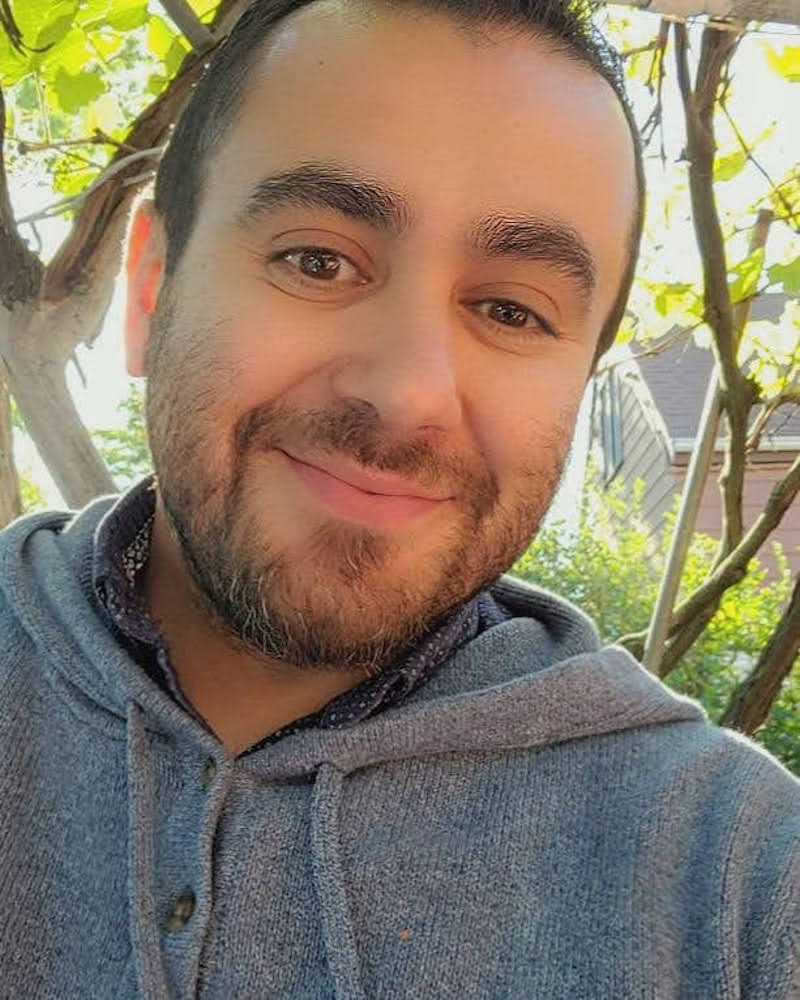Three people share how ankle monitors fail, damage and stigmatize

[ad_1]
In the year 2020, as the world grappled with the emergence of the COVID-19 virus, prisons and detention centers Hotspots of outbreaks. Looking to slow the spread of the disease, and under Threat of litigationSome jurisdictions have begun to look for alternatives to imprisonment, turning to electronic monitoring as a solution.
Electronic monitoring typically uses GPS tracking systems in devices referred to as ankle bracelets, ankle shackles, or lanyards to record the wearer’s location. This includes people awaiting trial and service Probation and paroleand confront Immigration procedures. Jurisdictions use this tracking technology to determine how long a person can stay abroad and where they can go. Although COVID-19 has created a larger market for Electronic monitoringGovernment use of electronic surveillance was already on the rise. From 2005 to 2015, the number of active electronic displays in use increased increased by 140 percent.
Decisions by jurisdictions to normalize this technology are worrisome for several reasons. studies Displays that Monitors fail To achieve their clearly stated goals of ensuring habeas corpus, protecting public safety, and promoting rehabilitation. Instead, electronic surveillance extends the scope of mass incarceration and acts as a form of digital incarceration known as electronic shredder, It leads people to physical prisons and simple technical prisons violations, Shipping malfunctionsAnd False alarms.
Electronic surveillance also exacerbates systemic inequalities based on race, class, and disability. For example, in Detroit, there are blacks Twice as likely as white people to be monitored electronically. Depending on the jurisdiction, fees for wearing these screens range from $3 to $35 per day, often in addition to the initial setup fee, which can range from $100 to $200. Exorbitant fees are combined and can amount to hundreds of dollars a month, Exhausted families already dealing with the return of their loved ones from prison. Furthermore, research shows that stigma, social isolation, and stress from surveillance are exacerbated Depression and anxiety for the wearer.
On September 29, the ACLU released Electronic Surveillance Revisited: A Guide to Damage Reduction, which calls on judicial authorities to replace electronic surveillance with less restrictive and more effective measures, such as court reminders and transportation assistance. The report also outlines ways in which judicial authorities can mitigate surveillance harms in accordance with the principles of due process and fairness. We urge the judicial authorities to:
- Severe restrictions on the use of electronic monitoring
- Provide sufficient notice and explanation of the monitoring requirements
- Standardization of appeal, review and cancellation procedures
- Ensure access to a lawyer
- Eliminate discrimination on the basis of wealth and housing status
- Reasonably accommodate people with disabilities
- Develop reasonable standards for movement and expansion
- Provide credit for time spent on electronic monitoring
- Ensure privacy and data protection
- Ensure adequate data collection and transparency
You can read the full report here. Defense attorneys can view our resources with guidance on challenging pretrial electronic surveillance here. Below, three people share their stories about permanent electronic surveillance.

Credit: Michael Tavola
Michael Tavola
Michael Tavola is a 42-year-old man from Chicago, Illinois. After serving 20 years in prison, he was released with an electronic monitor as a condition of his mandatory supervised release.
When I was first released on an ankle monitor in July 2018, I was approved for movement for three days, four hours each day, Monday, Wednesday, and Friday. After a while, I got an internship at my university and a full-time job with a temporary agency. But it was very difficult to adjust my movement credit hours. I called my parole officer and they told me I had to choose between training or a job with the temporary agency. They said I was doing too much. I was having panic attacks because of this. I’m trying to go to school. I’m trying to work. I do not understand the problem. Are you telling me I do too much? Am I doing too much of what I’m supposed to do? You come out thinking you are free and you will be able to enjoy life, but now doing basic and necessary things like work and school is more complicated.
You come out thinking you are free and you will be able to enjoy life, but now doing basic and necessary things like work and school is more complicated.
I eventually extended my movement hours, but between the internship, school, and job at a temporary agency, I didn’t have time to do anything else. I couldn’t buy soap, and I couldn’t buy clothes. I’ve just spent 20 years in prison, but I haven’t been able to visit my father. They had physical limitations and lived far away, and it was hard for them to come and see me. And every time I ask for more movement, the parole officer refuses me. Their point was that I shouldn’t get out of the house too much, no matter what I was doing. I was like, “Why am I still being punished?”
With this lack of movement, you are inadvertently putting the person in a worse position. In my experience, in this county, it’s almost impossible to increase movement time for anything, even going to the hospital. I never want to say that staying at home is better than staying at home, but you don’t allow people to work or do anything. And that’s why so many people cut their screen – because they can’t take it anymore. It gets very difficult.

Credit: Shanann Davis
Shannan Davis
Shanann Davis is a 43-year-old Native American woman who is a member of the Chippewa Sioux tribe in Michigan. She is temporarily released from prison to a treatment center on the condition that she wears an ankle monitor.
Being on screen was very stressful. It is a long rope that wraps around my legs and knots around me. The sheriff’s department had to come that day and fix the bracelet because it was so loose. Now it got really tight. When I walk, my muscles contract and I feel like they are going to break. I’m afraid to ask them to tone it down again because every time I call them, they give me an attitude. They have their comments about “You shouldn’t do drugs and you shouldn’t break the law.” I get it. But if you can’t understand someone else’s lifestyle, you shouldn’t do the job you’re doing. These people are meant to protect and serve and they are just hated.
In the recovery home, I am not allowed to leave due to a court order. I can’t go on group outings with the other girls staying here. I am pretty much cooped up in this house.
And with electronic surveillance, it makes it difficult for us to be where we need to be, to have the tools to live again in society.
I’m not allowed to go to the store with the rest of the house. I am not allowed to walk on the way to exercise. There’s always staff with the girls, so we’re not supervised, but because of the way my pledge is worded, I’m not allowed to participate.
I also can’t pay for the screen. It costs $105 a week to sign up for this thing, and my mom pays for it. And with electronic surveillance, it makes it difficult for us to be where we need to be, to have the tools to live again in society. Like one day when I came back from the doctor all 3 lights on the monitor went out and it lasted for 2-3 hours. I couldn’t get hold of anyone. The thing goes off all day. It’s stressful because I think they will come and take me and arrest me.
Matthew Brown
Matthew Brown is 34 years old and lives in Maricopa County, Arizona. He was placed on an ankle monitor awaiting trial. Due to delays in court, Matthew has been under an ankle monitor for 3 years without a chance to remove the monitor.
Since being under electronic surveillance, I have lost contact with my family. My parents and grandparents live in Mexico. Most of our family events are in Mexico, but I can’t go. I missed my sister’s wedding, my nephews’ birthdays. I don’t see my parents or grandparents unless they come to Arizona. I’m trying to use FaceTime, but they’re not very tech savvy. He really cut me off.
The more detached I am from people, the harder it becomes mentally for me; The more I feel bad about myself. When you are under electronic surveillance they say you are free, but you are actually imprisoned. It’s about 100 degrees six months of the year in Arizona.
The more detached I am from people, the harder it becomes mentally for me; The more I feel bad about myself.
I can’t wear pants, so everyone sees the bracelet. Taking my nephew to a bounce house or going to the gym gets judged automatically. Moms pull kids away. You just feel bad.
I’m worried about money too. Until my case is resolved, I don’t have to pay for the screen, but I’m afraid of the final price. Each monitor unit costs $1,740. The water may have damaged a dozen or more because of my job as a boat captain. I wasn’t having fun, I was just doing my job. There is a daily fee as well, but I don’t know how much it is. The caseworker said, “You’re waiting 3 years, and that would be too expensive.” Even if it’s $10 a day, I’ll pay $10,000 after 3 years. I don’t know when they will remove the screen. Every day is more that I have to pay. They can force someone to plead guilty because you owe a lot of money.
If I did not have the financial means and support, I would have already pleaded guilty. I can only imagine how many people do that. People lose their jobs due to electronic surveillance and are unable to pay for their homes, families or children. It’s the domino effect.
[ad_2]
Source link





